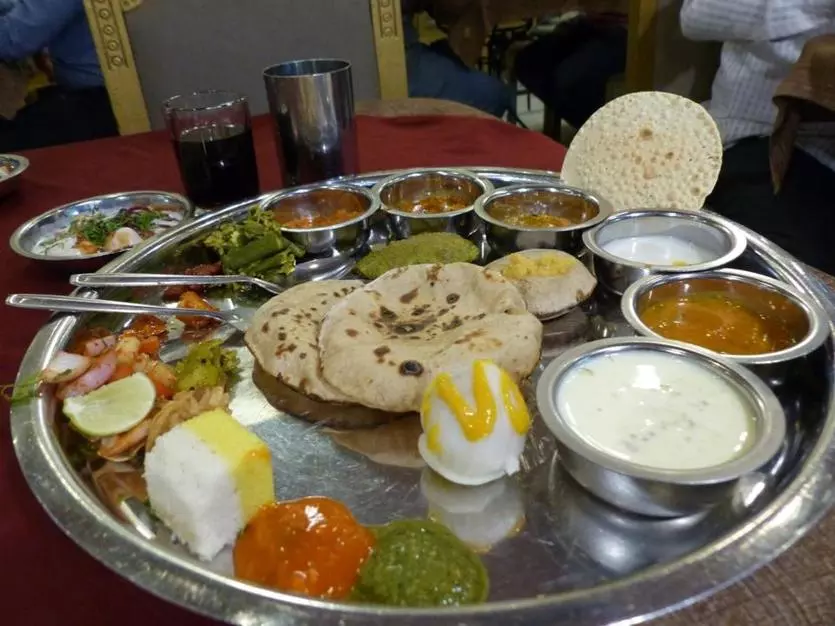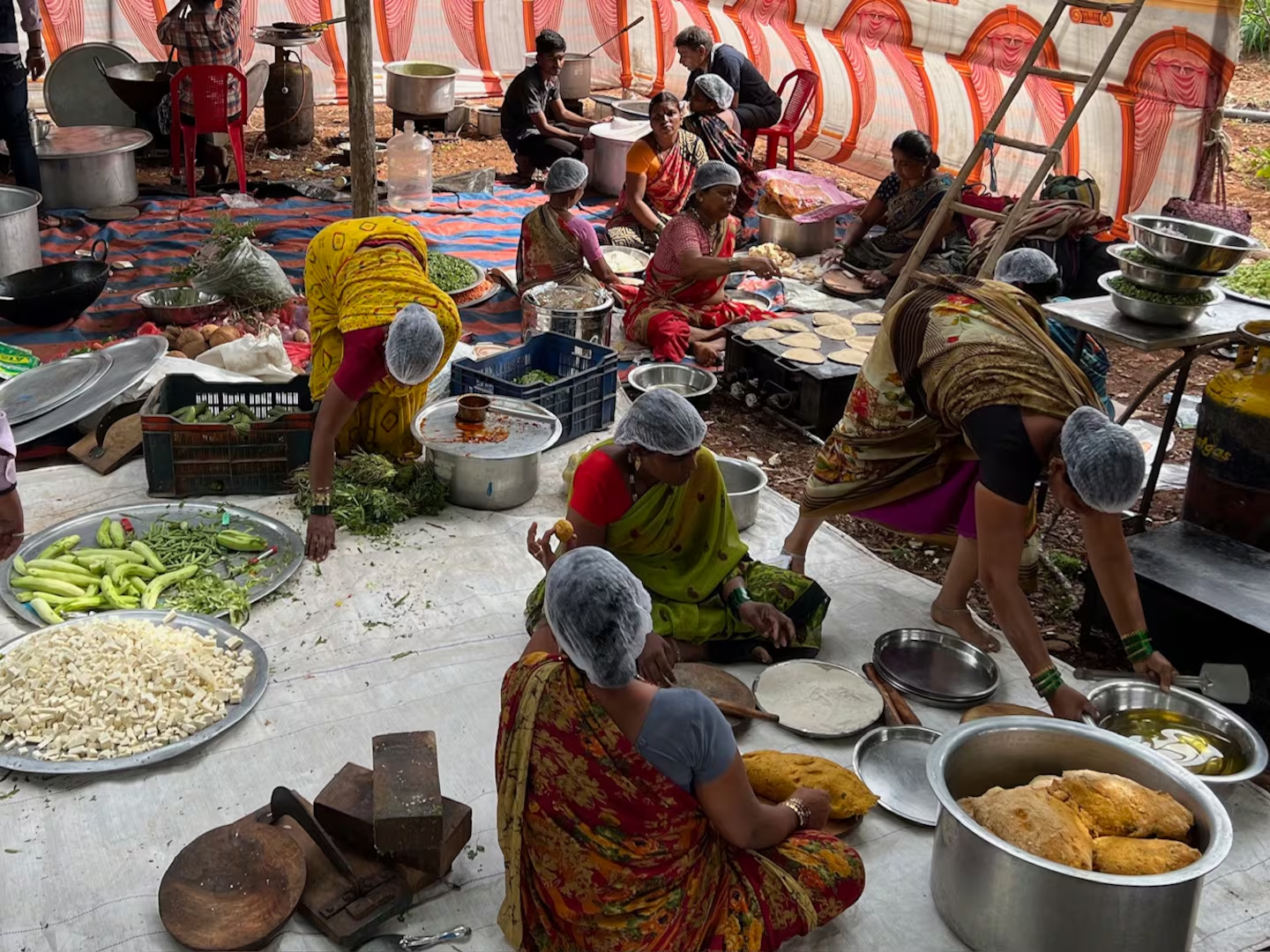Even as I carefully scrutinize food labels, buy organic produce and whole grains, and educate my children on healthful eating, I realize it is a luxury few enjoy. Millions of mothers worldwide are sure to look upon my nutrition-obsession with jealousy and resentment because they don’t have food for their children.
This epiphany came to me recently, when my kids came home after a long day, ravenous.
“What’s for dinner Mama?” they asked as soon as they stepped in the door.
“Indian food,” I answered. “Rice, dal, cauliflower curry.”
“We had that yesterday,” my daughter, 8, complained.
“Yes, and we also had that the day before yesterday,” I replied, defensive.
“Can we have something else?” my son, 10, asked.
I took a deep breath and shot back. “Of course! What would you two like? Mexican? Thai? French? Perhaps a new fusion dish?”
They stared wide-eyed at my angry sarcasm. This was a question they asked every single day when they returned home and it never made me angry. Of course, I felt instantly remorseful and my children accepted my apologetic hugs and kisses. They began laying the table, chattering about their day, but my mind was far away.
I just couldn’t stop thinking about the children who, that evening, were asking their mothers, “Is there any food? We haven’t eaten yesterday, and the day before that…”
Hunger is the unspeakable injustice of our times. In the last two decades alone we have successfully transplanted faces and limbs, developed artificial hearts, invented Bluetooth, and highly-targeted cancer therapies. Yet, we haven’t conquered the biggest problem – world hunger. True, genetically modified foods can help but we are still a long way from that.
The reality is that 66 million children attend school hungry every day and 23 million are in Africa alone. 3.5 million children die every year from malnourishment. In 2013, 6.3 million children under five died from not getting enough food – that is 17,000 children a day. http://www.worldhunger.org/articles/Learn/child_hunger_facts.htm
Several factors have exacerbated world hunger in recent years. Wars and conflicts have displaced more people than ever before in history. In 2014, 13 million people were uprooted by violence; an average of 42,500 fled their homes every single day. The displaced end up in refugee camps where, studies show, they spend an average of 17 years. Add to that those who have to flee because of floods and famine, earthquakes and tsunamis and we have a significant population that is “homeless.”
Homeless. Poor. And hungry.
It is all the more heartbreaking when the victims are starving children. (In the 1990’s 500,000 children died in Iraq because of Saddam Hussein’s ration plan that delivered food only to the people he favored).
The effect of child hunger, though, does not result only in disease and death. It is far worse and ripples through society, affecting everyone, even us, living our charmed lives. Hungry children drop out of school so they can do menial jobs to earn money and buy themselves food. They end up uneducated and exacerbate the poverty cycle. They are more likely to be depressed, mentally unstable, turn to crime. Ultimately, they become a burden to a society (which often doesn’t do much to help them in the first place).
There are people who care and are doing whatever they can to eliminate child hunger but there is one organization that, in my opinion, has succeeded beyond expectations – Akshaya Patra, an Indian non-profit, provides free meals to 1.5 million schoolchildren every single day. The food is prepared using fresh, local ingredients under hygienic conditions approved by the WHO. The program is modeled like a corporation and scaled so a $15 donation can feed a child for an entire year. The promise of a meal entices children to come to school. They get an education, jobs and help their families break the poverty cycle. (https://www.foodforeducation.org/)
I was so impressed with Akshaya Patra that we made it “our” charity a few years ago. Since my children were five, they have foregone birthday party gifts and guests, instead, donate to Akshaya Patra. My children are none the worse for not getting birthday gifts. They understand that $15 goes a long way – it helps feed a poor child for an entire year and the meal Akshaya Patra provides may be the only one the child might get that day. To know that you are making a difference at such a young age by giving up birthday presents is strangely empowering and humbling. (Of course, it doesn’t stop my children from fussing about the food I serve them but they are children after all).
Akshaya Patra runs highly mechanized kitchens and I visited one with my family last year. The kitchen produced 250,000 meals a day. Some of the world’s top engineering minds had designed the machinery, volunteers had perfected bulk production of spice mixtures so the food’s taste wasn’t compromised, and the operation assured a market for local farmers’ produce and grains.
The most impressive thing, though, was watching the children eat their meals sitting cross-legged, broad smiles on their faces as they shoved the food into their mouths using their fingers. I wish I had a picture of that but I was so entranced by their joy that my camera hung helplessly around my neck. I simply committed that image to memory.
It also occurred to me, at that moment, that the most effective way to care is to try and put myself in the shoes of a hungry child. Could I not eat for a day just to know, somewhat, how it feels? Could I give up coffee for a week and donate that money to Akshaya Patra? Could I stop drinking sparkling water because tap water was good enough?
I could. And it wouldn’t even kill me.
In fact, the misery from skipping a few meals, the resulting irritability, and the guilt of not being able to tolerate it even for a day were actually liberating. If nothing else, it was an escape from my privileged, selfish life.



